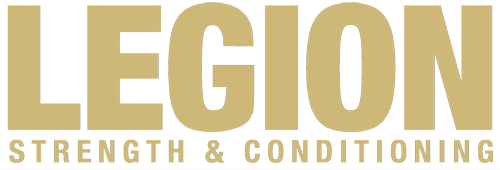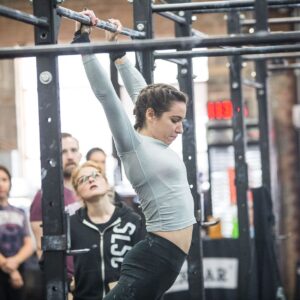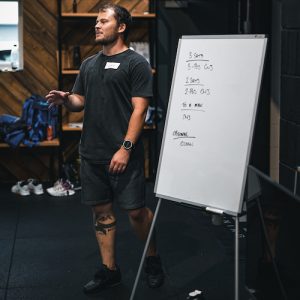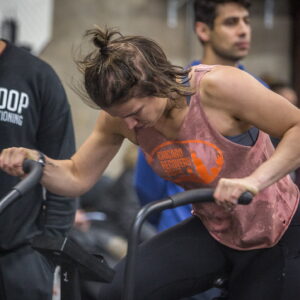Everyone knows that you can’t get super strong if you’re doing a bunch of conditioning. Right? Right?
We’ve seen conventional wisdom turned on its head through the results of CrossFit athletes getting really strong while doing obscene amounts of conditioning volume.
Athletes will do crazy things like set clean and jerk personal records at the end of a brutal workout – while not having trained specifically for heavy clean and jerks in months.
But, we admit that there does come a time in many athletes’ training plans when it’s time to buckle down and focus on getting stronger.
So, should we pull out conditioning during these times to maximize the amount of strength that we can gain?
It’s not that simple. In a sport like CrossFit, we often find that adaptations that we get by pulling everything apart and training specific pieces (ie gymnastics, weightlifting, running, etc.) don’t translate into improved performance in our sport.
Based upon that, our training protocols for getting strong in a way that actually makes us better at CrossFit need to be different than those that would be utilized for sports like powerlifting or weightlifting.
Check out the full conversation with Jon and Todd to learn:
- Why getting stronger won’t necessarily make you better at “heavy barbell workouts”
- How to think of strength work as general physical preparedness (rather than sport specific training), since strength is often only a minor part of an athlete’s score for most events
- Whether athletes can actually get better at strength and conditioning at the same time – and what trade-offs there are when training both concurrently
Listen below – or on the podcast player of your choice.
Listen Here
- iTunes
- Overcast
- Google Podcasts
- mp3
- Or stream here:
- If you’re enjoying the show, why not a leave a review? It makes a difference in terms of other people finding the show.
Show Notes:
- [0:12] Will conditioning limit your development of strength? Maybe. But removing conditioning from a competition program does not work well for CrossFit athletes. Even in fields such as weightlifting and powerlifting, where sufficient conditioning performance is not necessary to succeed, athletes are completing some form of regular conditioning.
- [4:31] Athletes will often need to do a focused training cycle in order to gain muscle. However, it’s difficult to change body composition (by either adding muscle or losing fat) for most individuals. Having an off-season during a yearly training block can be a useful tool in putting on muscle while also allowing the body to take a break from stressful, high-intensity work.
- [7:13] Certain populations (those who struggle to cycle moderate weight with consistency, those whose one-rep max limits them competitively) can benefit from strength-focused training. Most athletes still need to do a substantial volume of conditioning work in order to do well in CrossFit.
- [16:00] Training both strength and conditioning at the same time builds robust adaptation. There may be trade-offs in terms of the amount of strength that you can build relative to your absolute potential, but the strength will carry over more to mixed modal sport if you are training conditioning simultaneously.
- [21:52] The volume of movements like squatting done in conditioning workouts needs to be taken into account when programming strength development work.
- [29:16] Having a plan for a “season” of training is essential. Coaches and athletes should have priorities, and structure training throughout a season to focus on developing those priorities.





